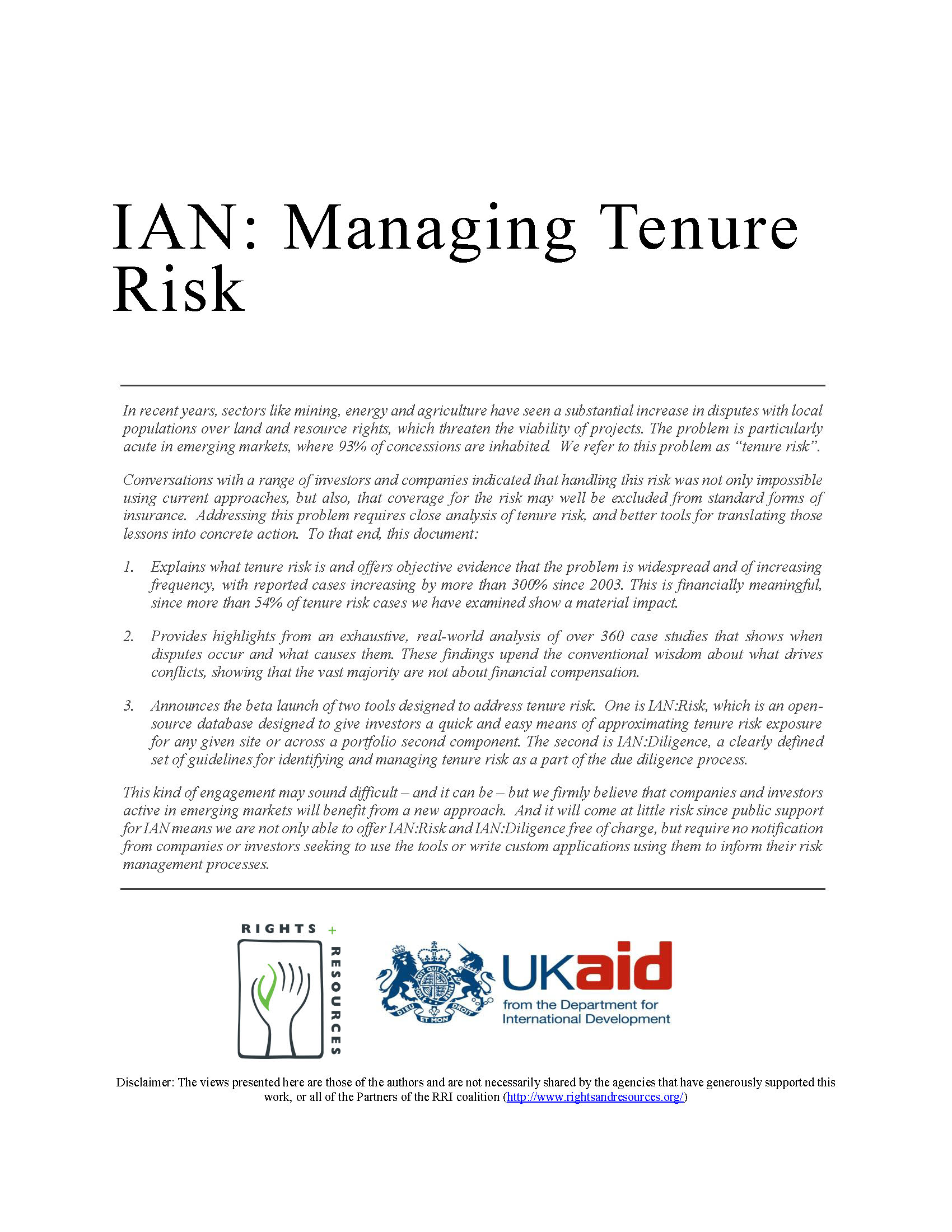Date: February 3, 2016
In recent years, sectors like mining, energy and agriculture have seen a substantial increase in disputes with local populations over land and resource rights, which threaten the viability of projects. The problem is particularly acute in emerging markets, where 93 percent of concessions are inhabited. We refer to this problem as “tenure risk”.
Conversations with a range of investors and companies indicated that handling this risk was not only impossible using current approaches, but also, that coverage for the risk may well be excluded from standard forms of insurance. Addressing this problem requires close analysis of tenure risk, and better tools for translating those lessons into concrete action.
To that end, this document:
- Explains what tenure risk is and offers objective evidence that the problem is widespread and of increasing frequency, with reported cases increasing by more than 300% since 2003. This is financially meaningful, since more than 54% of tenure risk cases we have examined show a material impact.
- Provides highlights from an exhaustive, real-world analysis of over 360 case studies that shows when disputes occur and what causes them. These findings upend the conventional wisdom about what drives conflicts, showing that the vast majority are not about financial compensation.
- Announces the beta launch of two tools designed to address tenure risk. One is IAN:Risk, which is an open-source database designed to give investors a quick and easy means of approximating tenure risk exposure for any given site or across a portfolio second component. The second is IAN:Diligence, a clearly defined set of guidelines for identifying and managing tenure risk as a part of the due diligence process.

